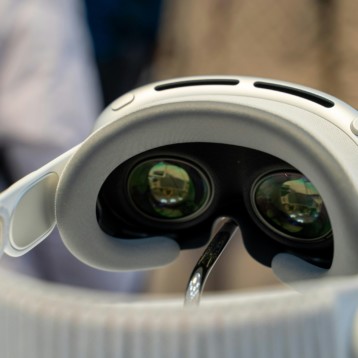Researchers at Cambridge University have found a new way to produce light-emitting diodes (LEDs), which they say can reduce the cost of LED products by as much as 75 percent in five years time. At the basis of the novel technology is Gallium Nitride (GaN), a man-made semiconductor that emits a bright light while using very little electricity. “Gallium nitride is probably the most important semiconductor material since silicon. It emits brilliant light as well as being the key material for next generation high frequency, high power transistors capable of operating at high temperatures” – said Colin Humphreys, head of the Cambridge Center for Gallium Nitride (CCGN) and professor of materials science at the university.
 |
Professor Colin Humphreys
(Credit: University of Cambridge) |
|
While GaN-based lighting certainly isn’t a new concept, the use of this technology has been largely avoided in the past due to the high production costs it entails. CCGN scientists say the new technique, which grows GaN on silicon wafers, brings down manufacturing costs to a tenth of current prices. Their method also achieves a 50 percent boost in terms of efficiency on previous approaches, which used GaN grown in labs on expensive sapphire wafers. In fact, the current prototype was tested to be 12 times more efficient than traditional tungsten bulbs and 3 times more efficient than fluorescents. The scientists have calculated that if GaN lights do become a standard for home and office use, it would cut the proportion of UK electricity used for lights from 20 to 5 percent – a reduction equivalent to the output of eight power stations.
 |
GaN based LED lights – affordable LEDs
(Credit: University of Cambridge) |
|
Apart from being cheaper, GaN LEDs possess a number of additional features, which overshadow conventional energy-saving bulbs. For example, a GaN LED, which is estimated to cost around two pounds, can burn for 100,000 hours, requiring replacement on average once in 60 years. Such LEDs are also friendlier for the environment, since as oppose to common energy-saving bulbs, these do not contain mercury and can therefore, be freely disposed of. Moreover, one can argue that GaN LEDs are more convenient to use since they can turn on instantly, do not flicker, and are dimmable. “This could well be the holy grail in terms of providing our lighting needs for the future. We are very close to achieving highly efficient, low cost white LEDs that can take the place of both traditional and currently available low-energy light bulbs. That won’t just be good news for the environment, it will also benefit consumers by cutting their electricity bills. It is our belief they will render current energy-efficiency bulbs redundant” – said Professor Humphreys.
 |
| LED bridge? (Credit: University of Cambridge) |
|
While GaN LEDs are already being used in camera flashes, mobile phones, bicycle lights, and other small-scale applications, CCGN scientists say there are many more possible uses to explore. Parallel research is currently being carried out to see how GaN lights could mimic sunlight to aid those who are suffering from Seasonal Affective Disorder (SAD). Moreover, the scientists say that ultraviolet rays made from GaN lighting could aid water purification and disease control in developing countries, as well as identify the spread of cancer tumors and help fight hospital “super bugs.”
The new technology has already been turned over to a manufacturer – “RFMD” in County Dunham, according from who the first GaN LED bulbs should be expected to appear on the shelves within two years from today.
TFOT has previously covered a number of innovative
LED technologies and applications including
LED traffic lights, which were developed by the Russia-based Art Lebedev Studios. Be also sure to check out an article about the
“Luxeed” LED keyboard, developed by Luxiium Lighting & Technology and one covering
LED-illuminated drumsticks, which were specially designed for Rock Band and Guitar Hero World Tour Drum Sets.
More information on GaN-based LEDs can be found at the
CCGN website.













